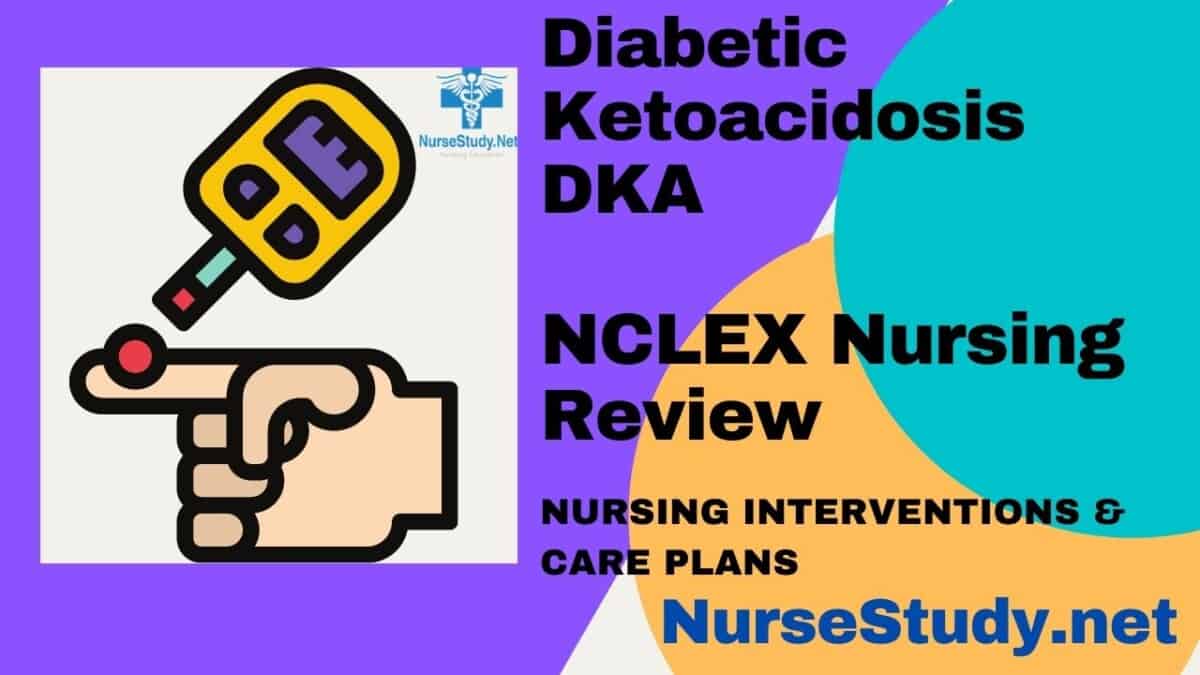Diabetic Ketoacidosis (DKA) represents a severe, potentially life-threatening complication of diabetes mellitus that demands immediate nursing intervention and careful monitoring. This comprehensive guide explores the essential nursing diagnoses, interventions, and care plans necessary for managing patients with DKA effectively.
Understanding Diabetic Ketoacidosis
DKA occurs when the body cannot utilize glucose for energy due to insufficient insulin, leading to the breakdown of fats and the production of ketones. This process makes the blood dangerously acidic and requires prompt medical intervention to prevent serious complications or death.
Key Clinical Manifestations
- Hyperglycemia (blood glucose >250 mg/dL)
- Metabolic acidosis (pH <7.3)
- Presence of ketones in blood and urine
- Dehydration
- Electrolyte imbalances
- Altered mental status
- Kussmaul breathing
- Fruity breath odor
Primary Nursing Assessment
Systematic Assessment Approach
Vital Signs Monitoring
- Blood pressure
- Heart rate
- Respiratory rate
- Temperature
- Oxygen saturation
Physical Assessment
- Mental status
- Skin turgor
- Mucous membranes
- Breathing pattern
- Level of consciousness
Laboratory Values
- Blood glucose
- Arterial blood gases
- Serum ketones
- Electrolytes
- Complete blood count
- Renal function tests
Priority Nursing Care Plans for DKA
1. Fluid Volume Deficit
Nursing Diagnosis Statement:
Fluid Volume Deficit related to osmotic diuresis, excessive urination, and vomiting as evidenced by decreased skin turgor, dry mucous membranes, and tachycardia.
Related Factors/Causes:
- Osmotic diuresis
- Hyperglycemia
- Vomiting
- Decreased fluid intake
- Increased metabolic rate
Nursing Interventions and Rationales:
- Assess vital signs every 1-2 hours
Rationale: Monitors cardiovascular status and effectiveness of fluid replacement - Monitor fluid intake and output strictly
Rationale: Ensures accurate fluid balance assessment - Administer IV fluids as ordered
Rationale: Replaces fluid deficit and corrects dehydration - Monitor laboratory values
Rationale: Guides fluid and electrolyte replacement therapy
Desired Outcomes:
- The patient will maintain adequate hydration status
- Vital signs within normal limits
- Skin turgor returns to normal
- Mucous membranes moist
2. Risk for Unstable Blood Glucose
Nursing Diagnosis Statement:
Risk for Unstable Blood Glucose related to insulin deficiency and altered metabolism.
Related Factors/Causes:
- Medication non-compliance
- Insufficient diabetes knowledge
- Stress or illness
- Poor dietary compliance
- Inadequate blood glucose monitoring
Nursing Interventions and Rationales:
- Monitor blood glucose levels hourly
Rationale: Allows for prompt intervention and insulin adjustment - Administer insulin as prescribed
Rationale: Maintains optimal blood glucose levels - Assess for signs/symptoms of hyper/hypoglycemia
Rationale: Enables early detection of complications - Provide diabetes education
Rationale: Promotes self-management skills
Desired Outcomes:
- Blood glucose levels will stabilize within the target range
- Patient demonstrates understanding of diabetes management
- Patient verbalizes signs/symptoms requiring medical attention
3. Ineffective Breathing Pattern
Nursing Diagnosis Statement:
Ineffective Breathing Pattern related to metabolic acidosis as evidenced by Kussmaul respirations and decreased oxygen saturation.
Related Factors/Causes:
- Metabolic acidosis
- Respiratory compensation
- Anxiety
- Fatigue
Nursing Interventions and Rationales:
- Monitor respiratory rate, depth, and pattern
Rationale: Identifies changes in respiratory status - Position patient appropriately
Rationale: Optimizes respiratory function - Monitor oxygen saturation
Rationale: Ensures adequate oxygenation - Administer oxygen as needed
Rationale: Supports respiratory function
Desired Outcomes:
- The patient will maintain a normal respiratory pattern
- Oxygen saturation >95%
- Acid-base balance restored
4. Risk for Electrolyte Imbalance
Nursing Diagnosis Statement:
Risk for Electrolyte Imbalance related to fluid shifts and acidosis.
Related Factors/Causes:
- Fluid loss
- Acid-base imbalance
- Insulin therapy
- Osmotic diuresis
Nursing Interventions and Rationales:
- Monitor electrolyte levels frequently
Rationale: Detects imbalances early - Administer electrolyte replacement as ordered
Rationale: Corrects deficiencies - Monitor cardiac rhythm
Rationale: Identifies electrolyte-related complications - Assess for signs of electrolyte imbalance
Rationale: Enables prompt intervention
Desired Outcomes:
- Electrolyte levels within normal range
- Normal cardiac rhythm maintained
- No signs/symptoms of electrolyte imbalance
5. Acute Confusion
Nursing Diagnosis Statement:
Acute Confusion related to metabolic imbalance as evidenced by altered mental status and disorientation.
Related Factors/Causes:
- Hyperglycemia
- Electrolyte imbalance
- Acidosis
- Cerebral edema
Nursing Interventions and Rationales:
- Assess mental status frequently
Rationale: Monitors neurological status - Provide orientation cues
Rationale: Supports cognitive function - Monitor for signs of cerebral edema
Rationale: Enables early detection of complications - Maintain safe environment
Rationale: Prevents injury
Desired Outcomes:
- The patient will return to baseline mental status
- Patient oriented to person, place, and time
- No signs of neurological deterioration
Prevention and Education
Patient Education Points
- Recognition of DKA symptoms
- Proper insulin administration
- Blood glucose monitoring
- Sick-day management
- When to seek medical attention
- Lifestyle modifications
- Medication compliance
Follow-up Care
- Regular monitoring of blood glucose
- Routine medical appointments
- Diabetes self-management education
- Support group participation
References
- American Diabetes Association. (2023). Standards of Medical Care in Diabetes. Diabetes Care, 46(Supplement 1), S1-S2.
- Journal of Emergency Nursing. (2022). Current Evidence-Based Management of Diabetic Ketoacidosis in Emergency Settings. 48(4), 380-392.
- Critical Care Nursing Quarterly. (2023). Nursing Management of Diabetic Ketoacidosis: An Evidence-Based Approach. 46(2), 156-168.
- American Journal of Nursing. (2023). Updates in DKA Management: A Guide for Nurses. 123(5), 34-42.
- International Journal of Nursing Studies. (2022). Evidence-Based Nursing Interventions for Diabetic Ketoacidosis: A Systematic Review. 125, 104098.
- Journal of Clinical Nursing. (2023). Best Practices in Nursing Care for Patients with Diabetic Ketoacidosis. 32(15-16), 2789-2801.
